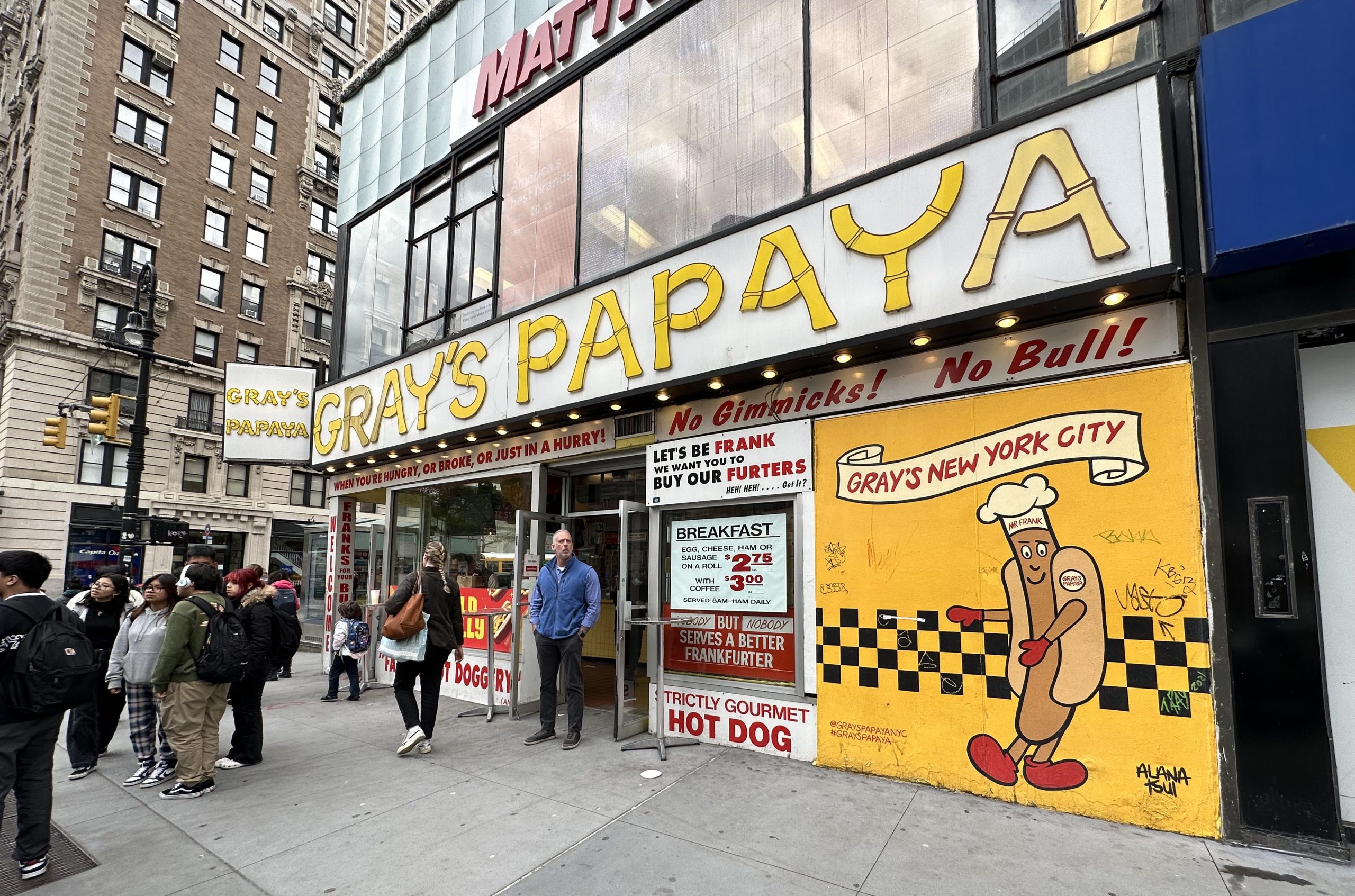
Nicholas Gray, the visionary behind Gray’s Papaya, a popular hot dog stand in New York City known for its unique culinary offerings, affordable prices, clever slogans, and enduring appeal among people from all walks of life, passed away on Friday at the age of 86. He succumbed to complications from Alzheimer’s disease, according to his daughter Natasha Gray.
While traditional New York pairings like pastrami on rye and bagels with lox have an inherent logic, the combination of papaya juice and hot dogs, the signature fare of Gray’s Papaya, might seem unusual and cater to different sociocultural groups.
Nevertheless, this unlikely duo achieved a level of popularity comparable to that of iconic establishments like Original Ray’s Pizza. Alongside Papaya King, the leading purveyor on the Upper East Side, other New York hot dog, and papaya juice vendors emerged, including 14th Street Papaya, Chelsea Papaya, Empire Papaya, Papaya International, Papaya World, Papaya World II, Papaya Heaven, and Papaya Paradise.
The roots of this unique pairing can be traced back to the 1930s when Constantine Poulos, a New York deli owner with a fondness for tropical vacations, began selling juice made from exotic fruits, effectively creating what some have described as New York’s first juice bar. Later on, he expanded the menu to include hot dogs, and his Upper East Side establishment became known as Papaya King.
The papaya-hot dog combination hadn’t yet gained widespread local popularity when Nicholas Gray, a recently divorced Wall Street stockbroker disenchanted with his career, stumbled upon Papaya King one day in 1973 at the corner of East 86th Street and Third Avenue. The vibrant ambiance, reminiscent of his Chilean homeland, along with the neon sign and hot dogs that resonated with his love for American culture, captivated him.
Inspired by his encounter, Gray left his job, entered into a franchise agreement with Papaya King, and opened his own location at 72nd Street and Broadway on the Upper West Side. After two years, he ventured out independently and named his establishment Gray’s Papaya.
Soon enough, imitations of Gray’s Papaya began to emerge. These replicas shared fundamental characteristics: no seating like Italian espresso bars, patrons stood while enjoying their meals, and during milder months, the doors remained open, blending the eatery with the sidewalk ambiance. Hot dogs were cooked on griddles instead of the traditional hot dog carts’ simmering water. The papaya drinks, often described as chalky, possessed a subtle resemblance to the actual fruit.
While Papaya King had the advantage of tradition and brand recognition comparable to the Yankees, Gray’s Papaya was akin to the scrappy expansion team, the Mets. It became a go-to spot for an after-school snack, a quick bite before catching a show at Lincoln Center, a meal on the go during the workday, or a treat after a romp in Central Park.

Upon its opening, Gray’s Papaya delighted hot dog enthusiasts with its affordable prices, offering 50 cent hot dogs compared to Papaya King’s 75 cents (a price that remained unchanged until 1999). 1982 Gray introduced the Recession Special: two hot dogs and a tropical juice for $1.95. Despite economic downturns, this bargain endured and now sells for $6.45.
Gray was averse to increasing prices, seeing it as a traumatic experience for himself and his customers. In 2008, he displayed a sign stating, “We are getting killed by galloping inflation in food costs. Unlike politicians, we cannot raise our debt ceiling and are forced to raise our very reasonable prices. Please don’t hate
